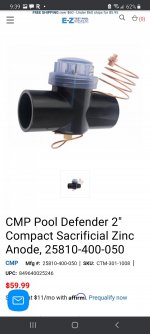Hello TFP world! I have several bonding questions for those who can weigh in, thanks!
Is it redundant to have a skimmer with a water bond AND a sacrificial anode with a water bond on your pool equipment? I'm not worried about budget but just want to absolutely make sure my pool is properly bonded. I plan on getting LED lights for my remodel so I wont have any metal housing for the lights and I don't have any metal ladders as well.
So besides bonding every metal object 5ft around my pool and all rebar at 4 points from the bond beam around my gunite in-ground pool, and the heater and pump, any other things I should consider?
I will also be putting GFCI outlets and breakers in my equipment pad area as well.
So other than a freak lightning bolt shooting into my pool or me dropping an electric drill on a NON-GFCI circuit, is there anything else that could shock or kill me?
Thanks!
Is it redundant to have a skimmer with a water bond AND a sacrificial anode with a water bond on your pool equipment? I'm not worried about budget but just want to absolutely make sure my pool is properly bonded. I plan on getting LED lights for my remodel so I wont have any metal housing for the lights and I don't have any metal ladders as well.
So besides bonding every metal object 5ft around my pool and all rebar at 4 points from the bond beam around my gunite in-ground pool, and the heater and pump, any other things I should consider?
I will also be putting GFCI outlets and breakers in my equipment pad area as well.
So other than a freak lightning bolt shooting into my pool or me dropping an electric drill on a NON-GFCI circuit, is there anything else that could shock or kill me?
Thanks!


